18: Belgian Cards: An Introduction
The card-makers of Turnhout were prolific in their output and inveterate copiers.
People were not always keen to collect Belgian cards, unless they were something special, so English pattern cards from Turnhout and elsewhere in Belgium were often ignored in the 1970s and 80s. It's true that there were a lot of them about - and still are - partly because they were made in vast quantities, even in the 19th century, but also because when Stanley Gibbons bought the Kurzrock collection from the United States, the market was flooded with them. As I understand it, that collector went to Turnhout at the time Carta Mundi was getting into gear and he bought up all the old stock of the makers who went to make up that company. There were both full packs and thousands of samples, some of which were very interesting and unusual, but nevertheless common. There was also a large export trade in Belgium. Moreover, a lot of square cornered, unindexed packs were made for the Indian market right up into the 1930s (so you often see them for sale misdated), I am led to believe, as temple offerings in particular. This would explain why so many of them are poorly printed, on thick card and impossible to play with. Below I give a selection of some of the more interesting items by way of an introduction.
For a list of a miscellaneous number of Belgian makers, some from outside Turnhout, click here►
Van Genechten samples and a couple of back designs; the large stamped numbers are typical of this maker. c.1875
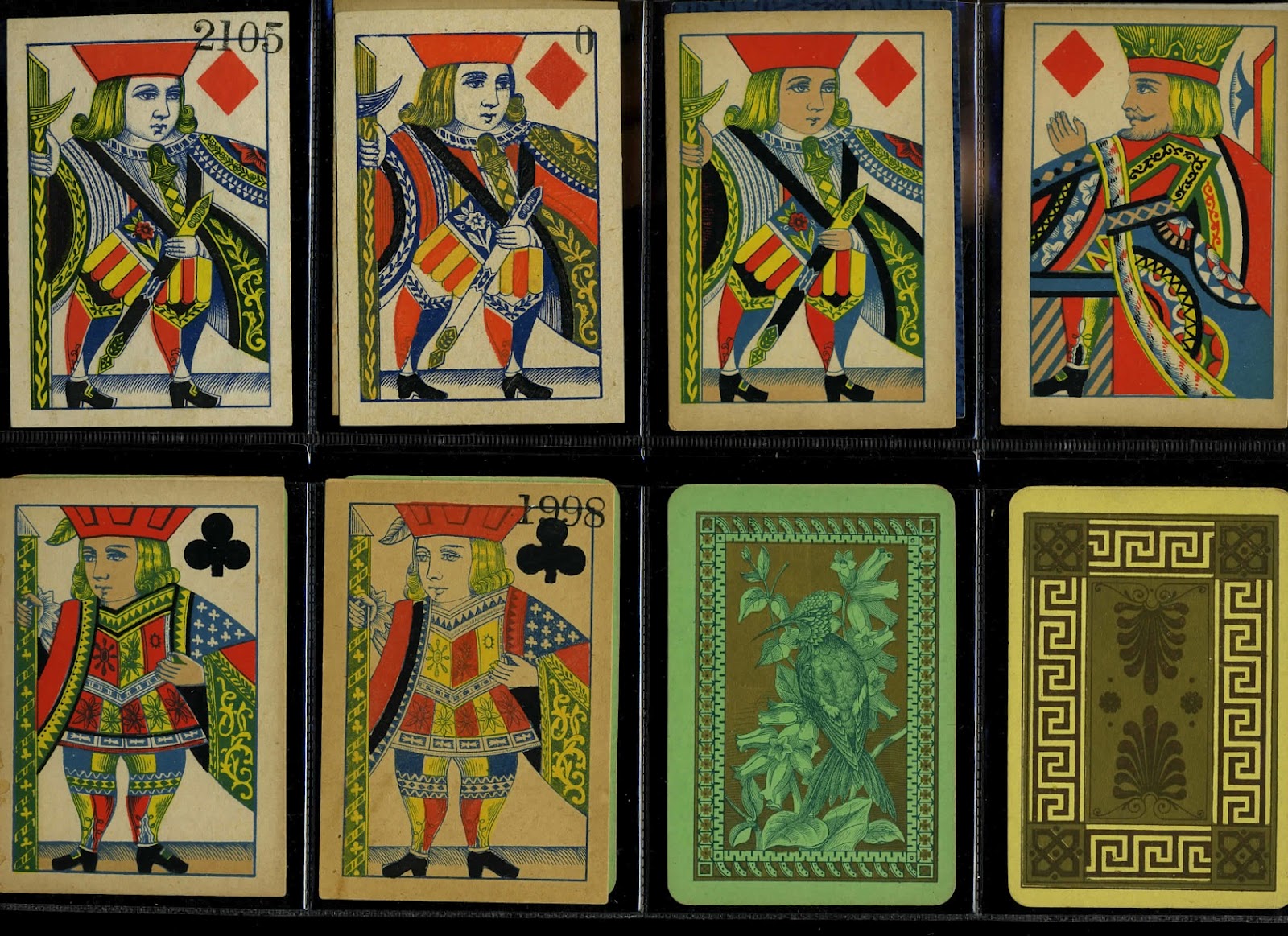
Van Genechten for Ansell, London, using a Turnhout version of the double-ended standard, c.1875 or earlier.
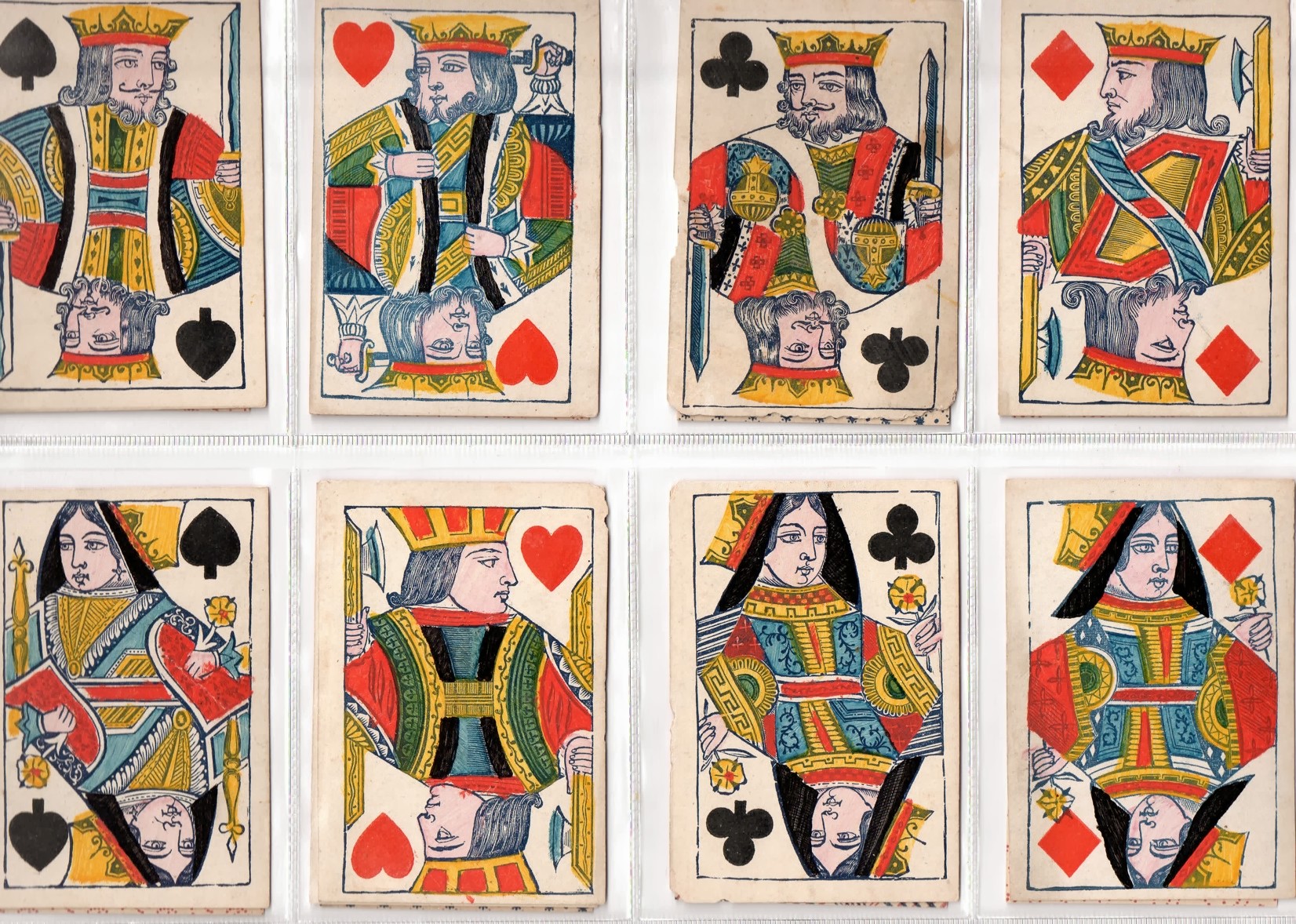
Glénisson was a less common maker, originally in partnership with Van Genechten. These cards, which use Glénisson's version of the same design, seem to have been made for the British market, as the back has the flowers of the constituent countries of the United Kingdom (including the shamrock for Ireland). c.1875
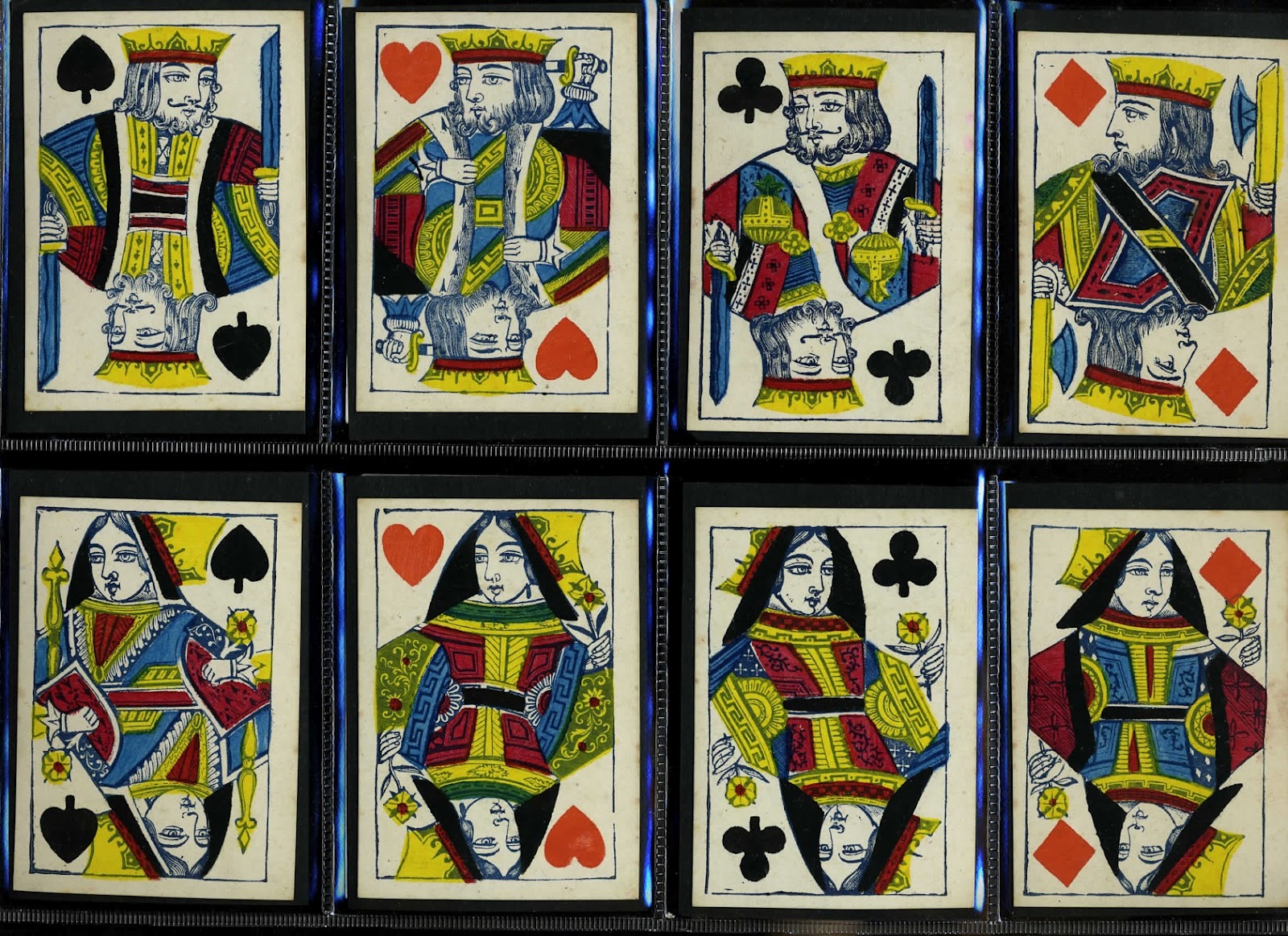
Brepols also used this design, c.1875-85
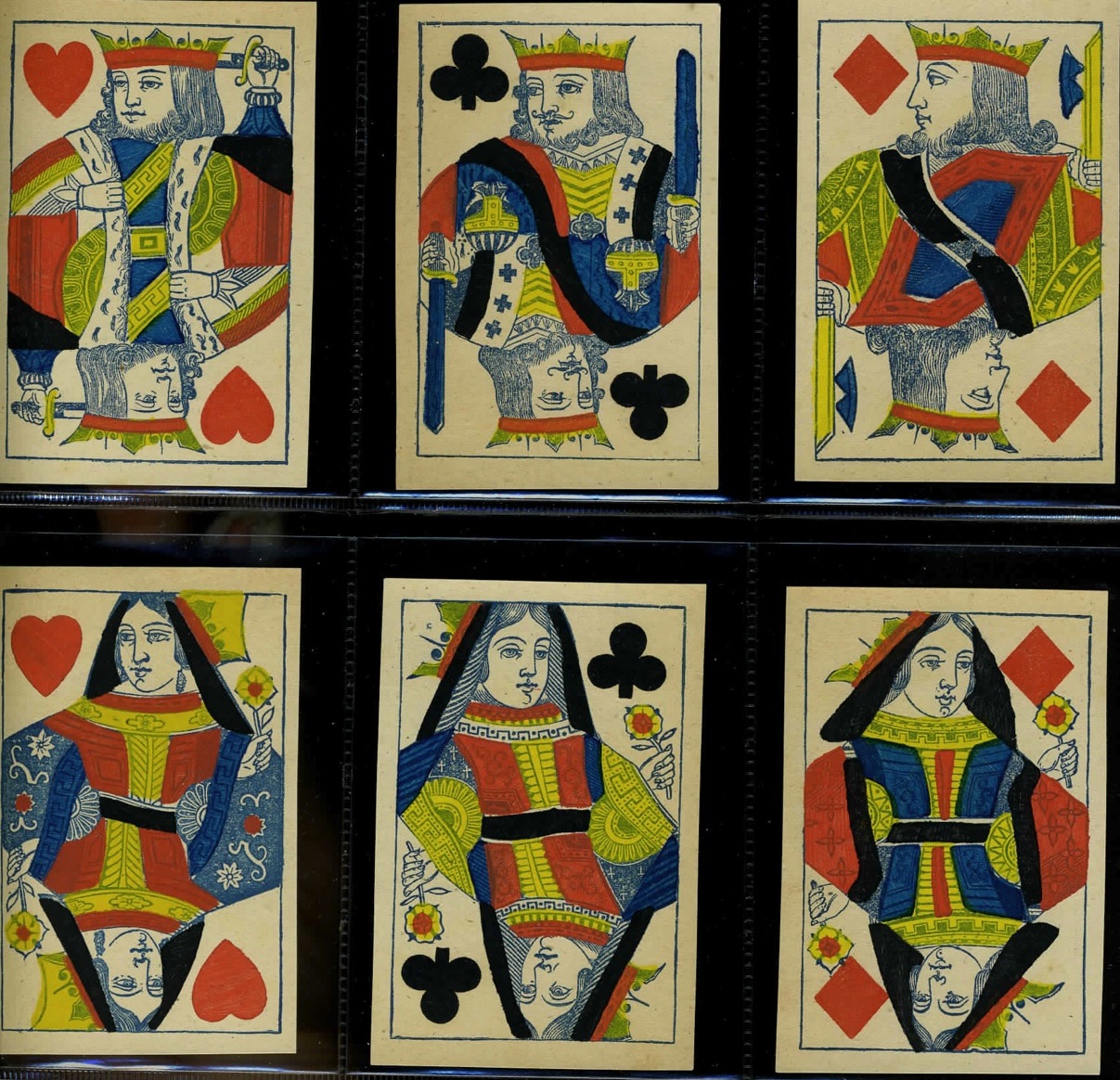
Mesmaekers continued to use this design, with six turned courts as well, c.1880-1900


Glénisson, like all the Turnhout makers, made single-figure courts, too, which continued later than in the UK and the USA.
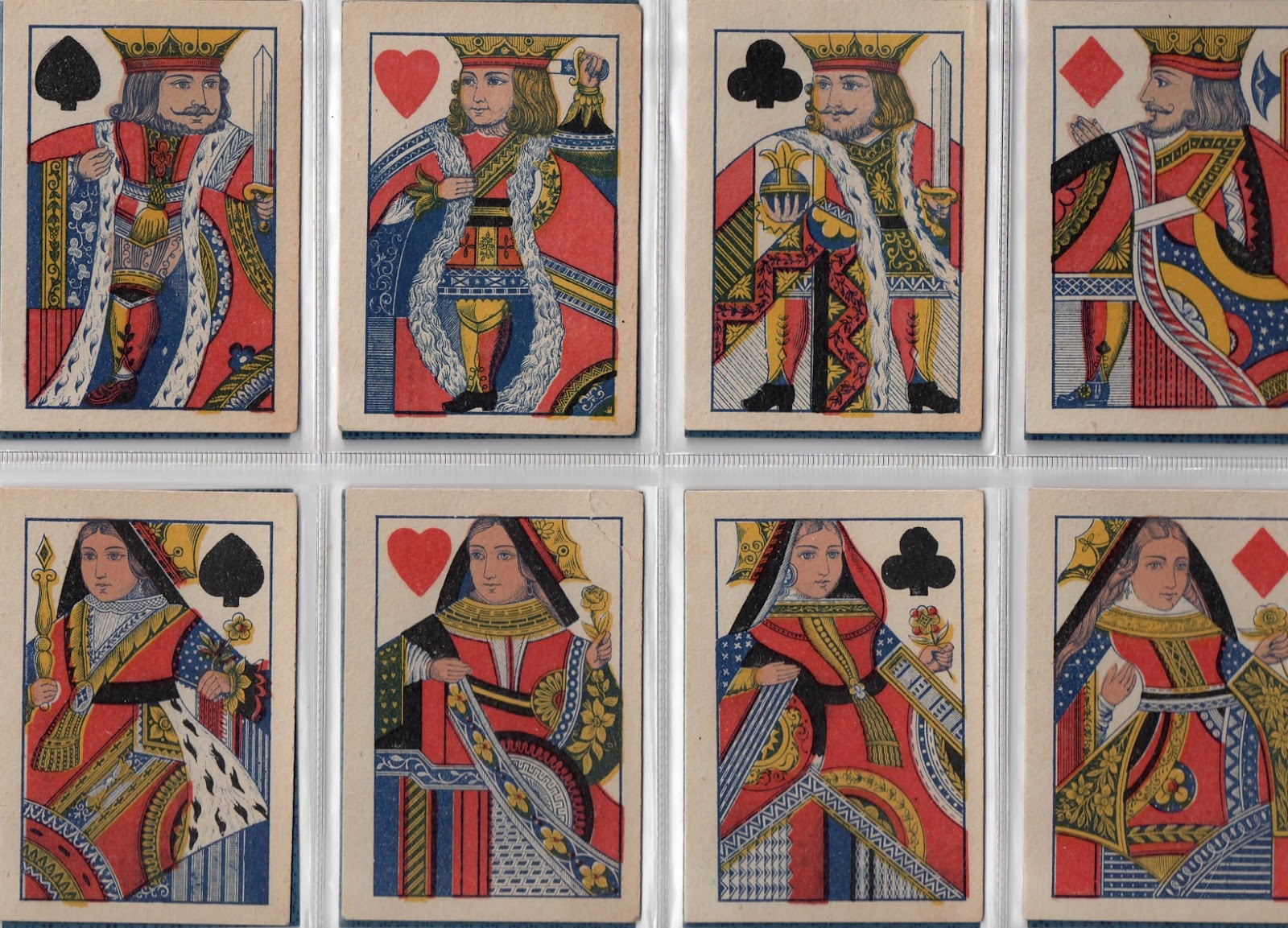
Glénisson, c.1870
Turnhout makers were inventive and produced north European versions of the standard English pattern with courts that look like those of the packs derived from the Paris pattern and some non-standard packs. A single-figure version is illustrated on page 19 of this blog; a double-ended version is illustrated here, c.1875.

Brepols, c.1875
The best reference for Belgian cards and their makers is probably The Turnhout playing card industry (1826-1976) by Eugeen Van Autenboer, published together with Louis Tummers' History of Belgian playing cards from 1379 to 1826 in the Memo from Belgium series, No.174, by the Belgian Ministry of Foreign Affairs and Cooperation in Development in 1976. It is full of historical detail, useful dates and discussion and illustration of the products of the various makers. Sadly, it is out of print, but the Belgian Embassy in London is a helpful first port of call. The Turnhout Museum dedicated to playing cards and their production is well worth a visit (as are the other European playing card museums) and from time to time catalogues for particular exhibitions have been produced.
There have been card-makers in various centres in Belgium, but Turnhout is certainly the most prolific in terms of size of output. They also produced a wide range of types of card, from Chinese money-derived cards to Portuguese dragon aces packs to non-standards as well. As regards the standard English pattern, they have always been inveterate copiers of other makers' designs, but after c.1850 started to develop their own as well. These designs were often used by different makers with variation in the details. The main problem with Belgian cards is that they are often anonymous, so unless you have sets of plates relating to named makers, it's down to educated guesswork as to who actually made them. The Turnhout makers also made cards for other publishers, who had their own named ASs (just as in many other countries), or the makers themselves may have used pseudonyms, especially for the export trade, such as Ansell or Davis, both based in London.
In the 19th century they were not above pinching other people's names and designs, sometimes as part of an illegal trade. In 1825 Joseph Hunt complained to a government commission looking into the taxation of playing cards that fake copies of his Garter AS were to be found on sale in England and that he understood that they had come from Belgium. The pack illustrated below is likely to be one such illegal import. The AS is from a wood block and has GIIII instead of GIV. The court cards are copies of Type II of the 1820s used by Hall, Stone and Creswick.
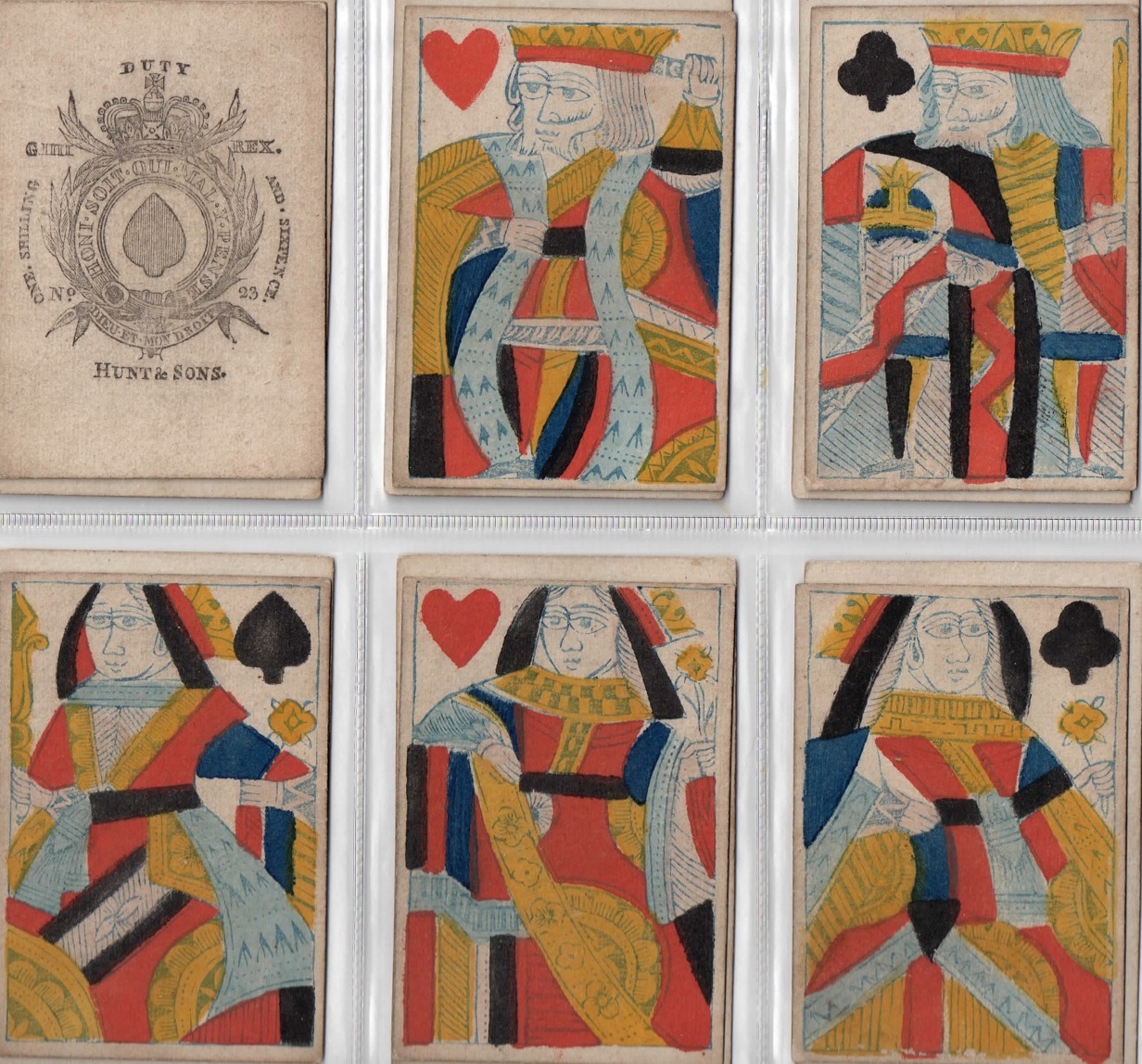
The usual single-figure courts were related to De La Rue's D3; the quality of the printing varied, but below is a rather finely executed example with purple added to the colours by Brepols & Dierckx Zoon from c.1870.
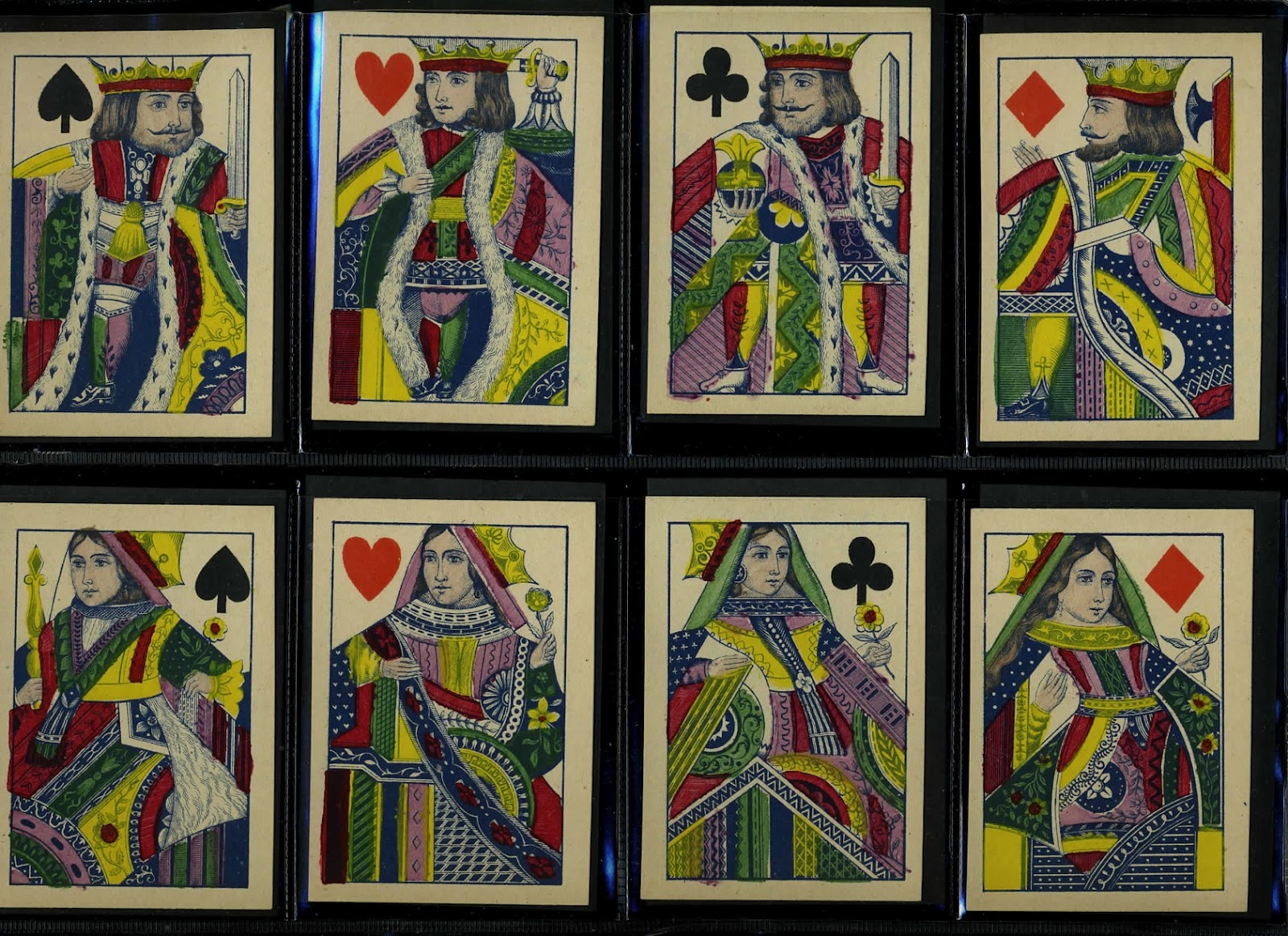

Van Genechten even produced a version with six turned courts, c.1880-1900.
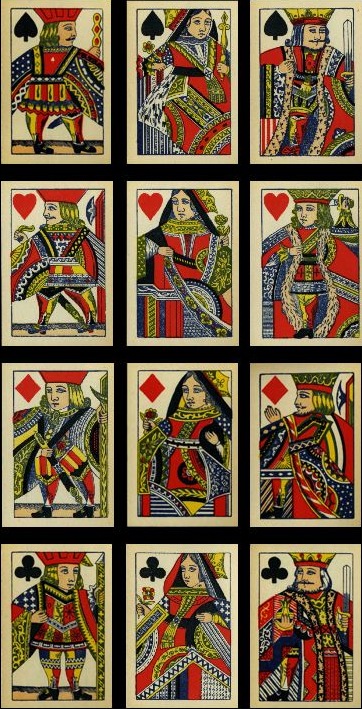
The non-English types were vary varied. A number of non-standard packs are illustrated on other pages of this blog. Below are three different versions of the JH in different styles of the Austrian pattern A, a descendant of one of the Lyons patterns; who made them is impossible to tell. The In Wien on the banner on the right does not mean they were made in Vienna. A few cards from a 16th century Lyonnais pack by 'IV' (from a reproduction by The Scolar Press, 1970) are also illustrated. Note that the figure of the JH is turned in the later pattern.
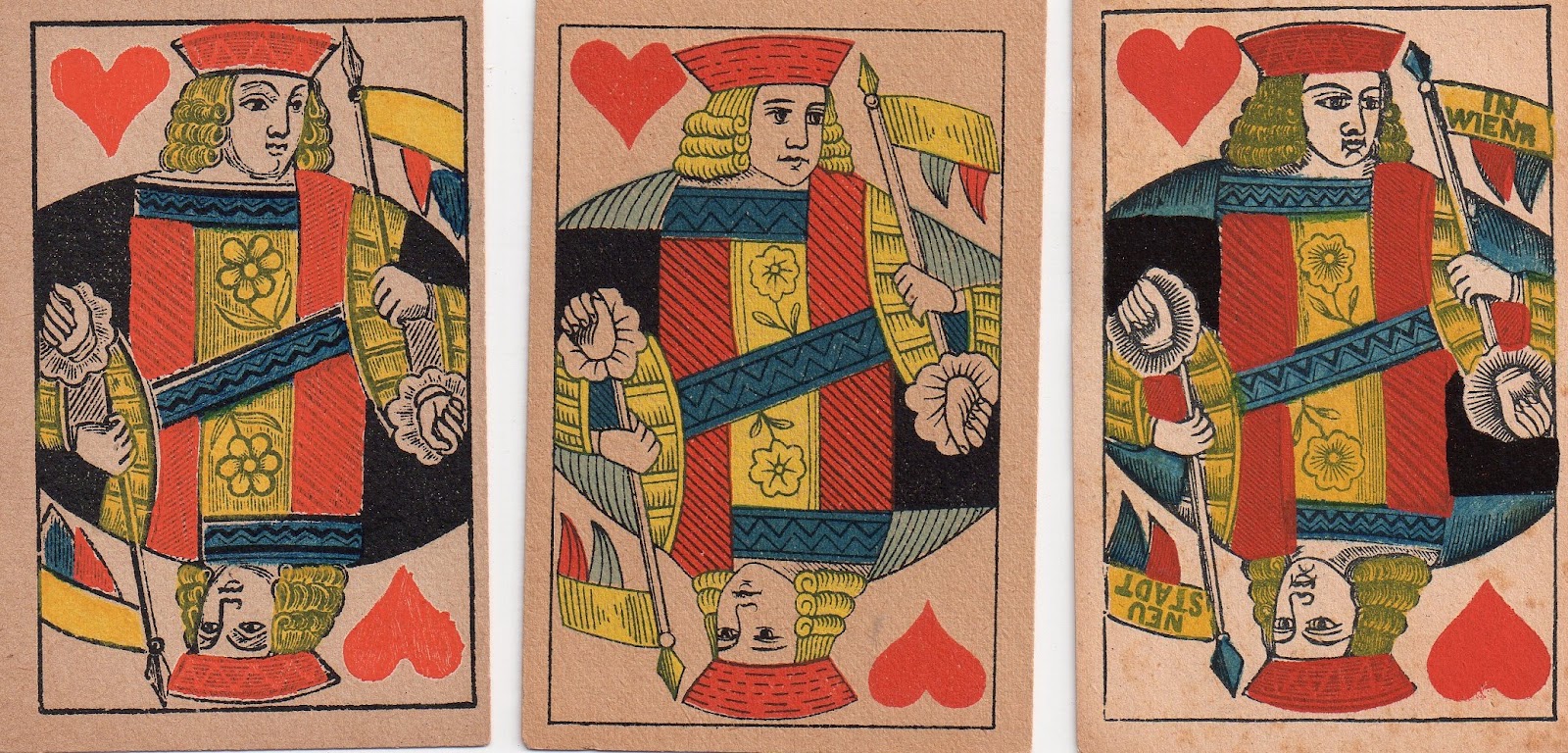

The QH from the same pattern was not turned.
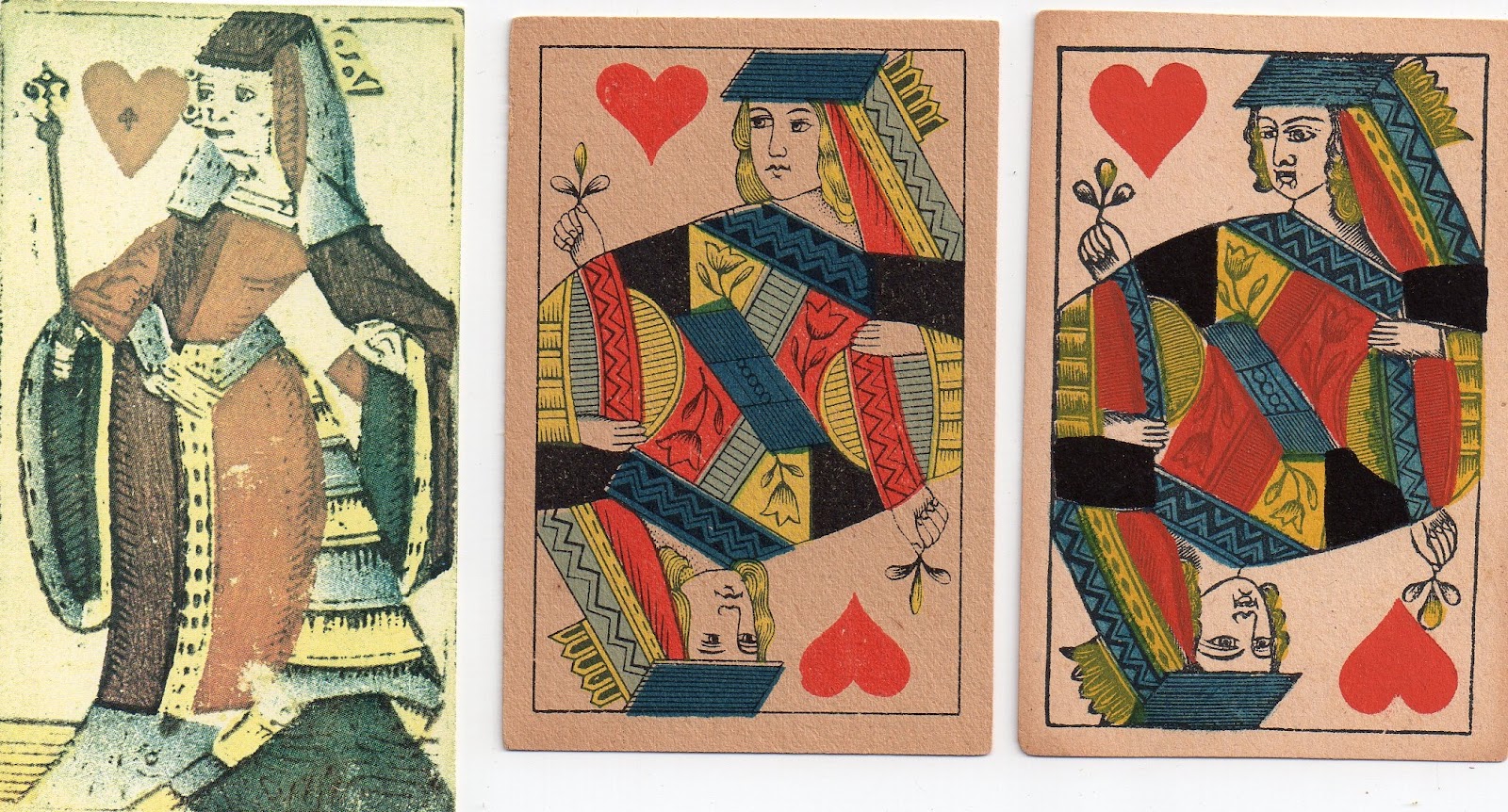
There is a nice example of an old French regional design, the first Rouen pattern (not the predecessor of the standard English pattern), still being produced in c.1900 by Brepols.
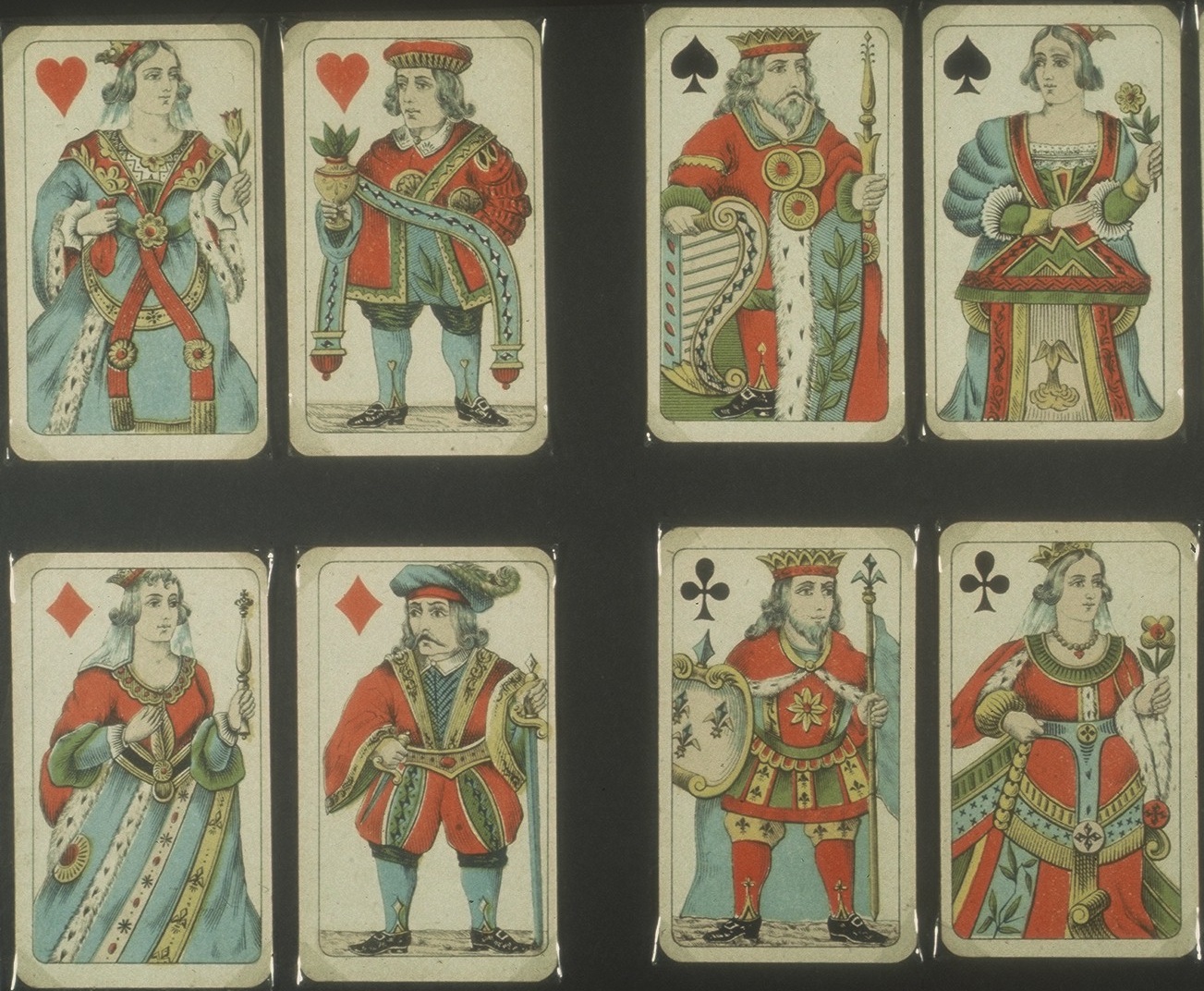
(For all the courts, see page 11.)
To finish I'll illustrate a number of ASs by Turnhout makers. Typically they have the motto Dieu pour tous at the bottom, but not always. Certain designs seem to be maker-specific.
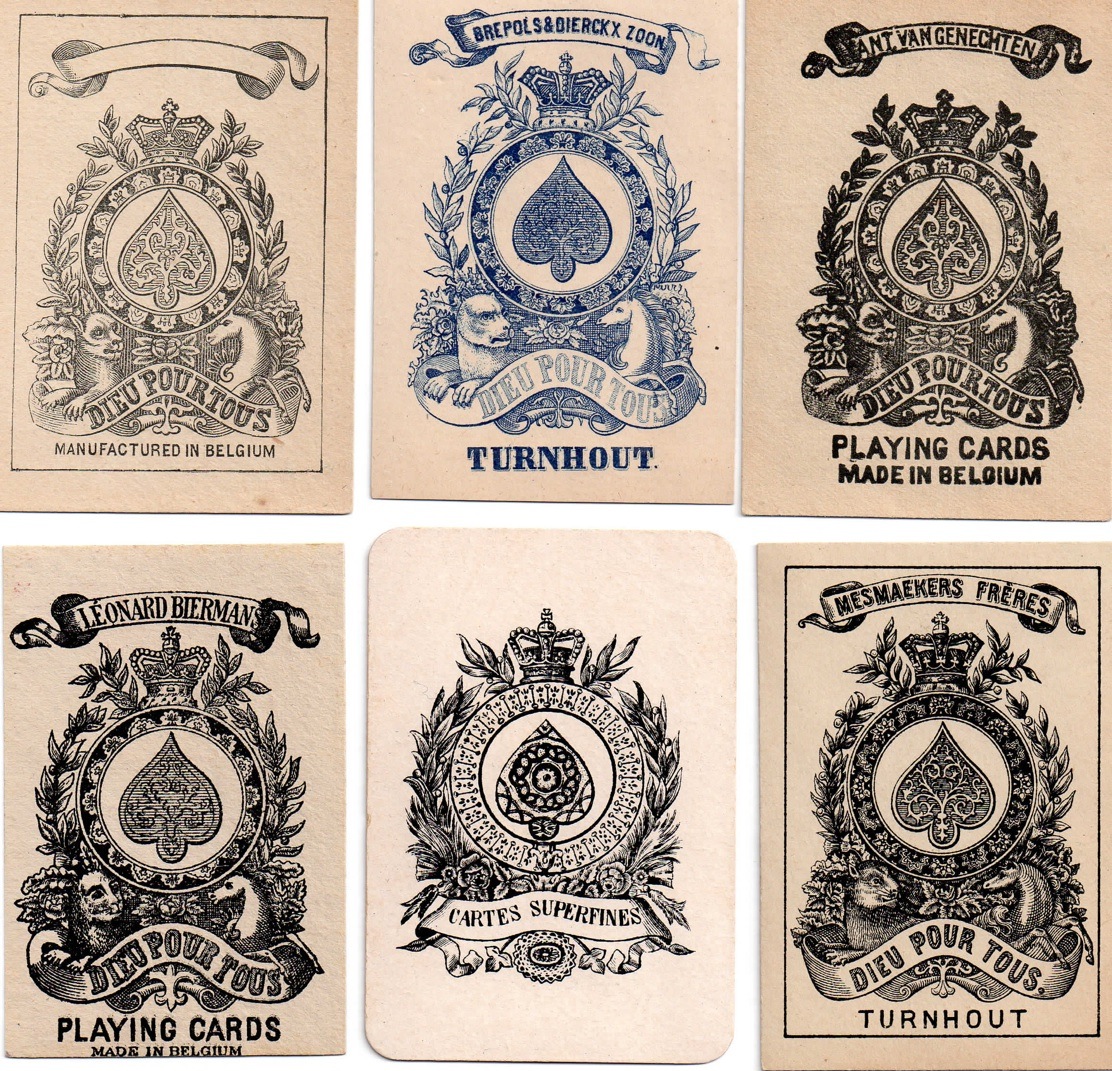
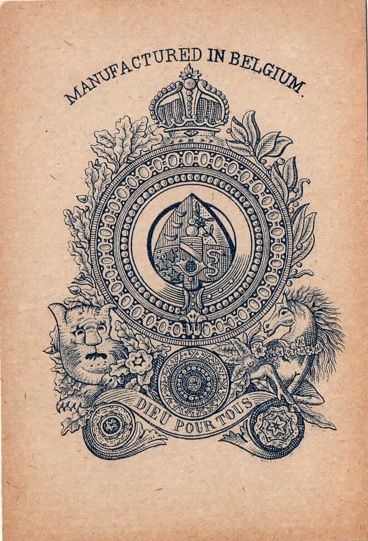
At the top left the anonymous one is probably by Van Genechten; other names would appear in the top scroll. The second left at the bottom is by Mesmaekers, the one on the right is by Van Genechten; again, other names appear at the foot, such as Ansell or Champeneys.
On future pages I'll illustrate standard English courts by maker. See pages 21, 22 & 23.

By Ken Lodge
Member since May 14, 2012
I'm Ken Lodge and have been collecting playing cards since I was about eighteen months old (1945). I am also a trained academic, so I can observe and analyze reasonably well. I've applied these analytical techniques over a long period of time to the study of playing cards and have managed to assemble a large amount of information about them, especially those of the standard English pattern. About Ken Lodge →
Related Articles

An Anonymous Belgian Transformation Pack
Anonymous Belgian transformation pack borrowing many images from earlier designs by Braun & Schneide...

Barok
Dutch pack from the 1950s with colourful Baroque courts, reprinted in 1983.

Blake et Mortimer – La Marque Jaune
Blake and Mortimer comic strip characters created by Edgar P. Jacobs.

Santo Mexico playing cards
Santo Mexico playing cards designed by Cédric Volon with Mexico-associated symbols.

Gallia Belgica playing cards
Gallia Belgica playing cards by Cédric Volon presenting a view of Belgian culture and folklore.

Historical Characters
Double-ended deck with historical characters and jacks as jesters by Daveluy, c.1850.

Mademoiselle Lenormand
XIX century ‘Mlle Lenormand’ cartomancy deck by Daveluy, Bruges.

Printing Presses
Antique printing presses from the Turnhout Playing Card Museum collection.

Club Soft Drinks
Promotional pack for Club soft drinks with amusing illustrations of different kinds of ‘club’.

High School Musical 3: Senior Year
American teen film depicting students staging their last spring musical.

Jeu Quatre Empereurs
Brazilian scenic aces with emperors of Brazil, Austria and France and other dignitaries on the court...

Animal Tarot by J. B Dubois
French-suited Bavarian Animal Tarot by J B Dubois, Liège, Belgium, late 18th C.

Animal Tarot by J. T Dubois
Early 19th century Animal Tarot pack produced by J T Dubois, Liège, Belgium.

Animal Tarot by G. Larmoyer
Flemish Animal Tarot deck by G. Larmoyer, Liège, 1753.

Louis De Poortere
Psychedelic designs promoting Louis De Poortere, a company selling carpets and rugs.

Een Kaartspel
Minimalist playing cards from The Netherlands
Most Popular
Our top articles from the past 28 days

